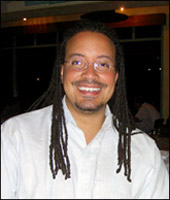Tuesday, 25 Jan 2005
MIDDLEBURY, Vt.
A crisp, cold, blue-sky New England day, fresh snow on the ground, and everything right with the world.
Except that last night, as I was preparing to attend a three-day conference on climate change here in Middlebury, Vt., yet another disturbing report on global warming drifted across the net. This one comes from the International Climate Change Taskforce, co-chaired by Stephen Byers, a Tony Blair confidant from the U.K., and Olympia Snowe, the Republican senator from Maine. In one sense, it’s nothing new: yet another document from moderate world leaders calling for urgent action and imploring the U.S. to join with the rest of the developed world to get something done. File it with similar reports from the National Academy of Sciences, the Nobel laureates, all the rest. This one’s designed, apparently, to function as Blair’s talking points for the coming year, during which he will serve as head of both the G8 and the E.U., and has promised to make climate change a top priority.
In another sense, though, the report is actually quite startling. It posits a new number as the climate crisis point: 400 parts per million atmospheric concentration of carbon dioxide. That concentration, the report says, has a better-than-even chance of eventually producing temperature increases of 2 degrees centigrade — enough to trigger widespread drought, crop failure, and rising sea levels. That 400 ppm number is very low; previously, most crisis scenarios focused on 550 ppm, which would represent a doubling of pre-Industrial Revolution carbon concentrations. It’s as if the American Medical Association suddenly announced that you needed your cholesterol down below 100 or your heart was going to go. This is especially bad news given that the earth’s CO2 levels are already north of 375 ppm and increasing by two parts annually. Clearly we are heading straight past the 400 level. Recognizing that, the report’s authors call on us to limit the amount of time the planet spends above the 400 mark, and to get back below it well before century’s end. Which essentially means: change everything, right away.
None of which will be easy (an understatement underscored by another report that came in overnight, this one showing that China’s economy grew 9.5 percent last year, its fastest increase in eight years). But it does provide a stirring background for the “What Works?” conference that kicked off today at Middlebury College, a semi-closed session designed to figure out why the United States has lagged behind the rest of the planet when it comes to global warming, and how we might catch up.
It’s a conversation that clearly needs to happen. Since climate change emerged as an issue in the late 1980s, the U.S. environmental movement has floundered in its efforts to make progress. No legislation of any consequence has come close to passing the House or Senate; none of the three presidents in that period have really put their muscle behind any action; and the current administration has about as much interest in the issue as that of, say, Warren Harding. In short, pretty much a total rout, especially in contrast to Western Europe and Japan, where the progress, while modest and halting, has been real.
Conference co-organizers Jon Isham, a Middlebury economist, and Sissel Waage, a former Natural Step analyst, have assembled an interesting cast of characters, concentrating less on the big environmental groups and their funders than on trenchant critics and people with local success stories to tell.
Tomorrow morning, Michael Shellenberger and Ted Nordhaus will host one of the first face-to-face discussions of their ubiquitously emailed paper “The Death of Environmentalism.” Billy Parish, head of the Climate Campaign, will present plans for a large-scale program of civil disobedience. Blue Vinyl producers Judith Helfand and Daniel Gold will show rushes from their in-progress film Melting Planet. And John Passacantando, who ran the most dynamic atmosphere advocacy group, Ozone Action, before taking over the reins at Greenpeace USA, will moderate a Thursday morning discussion about the climate crisis. Groups working with supermarkets to cut energy use, leaders of programs training citizens to give speeches on climate change, even Middlebury students who have handed out thousands of compact fluorescent bulbs to Vermont homeowners will try to identify the rhetoric, the metaphors, the leverage points that might finally spur us into action. “We want to reflect on and appreciate the power of networks,” says Isham. “Also the power of strategic thinking. And maybe most importantly, the power of a having a positive vision.”
In that case, it might be best not to pick up today’s edition of The New York Times and read the article datelined “Over the Abbott Ice Shelf, Antarctica.” The one in which scientists describe the relentless thinning of huge glaciers, the disintegration or retreat of “ice shelves the size of American states.” In some parts of the Antarctic, according to a British survey, “large growths of grass are appearing in places that until recently were hidden under a frozen cloak.”
In the end, it doesn’t matter what anecdote you choose, what precise parts-per-million figure you pick as the threshold of peril. Here’s what we know: The U.S. has wasted the 15 years since climate change emerged as a real problem. Its environmentalists have failed to make measurable progress on the greatest environmental challenge anyone’s ever faced. So we better come up with something new.


